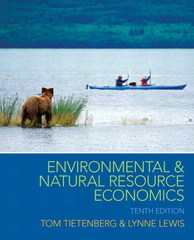not too sure what is being explained here. is it possible to be explained in detail using quotes and written in a body paragraph form ? please and thank you!
of 2022. Global core inflation, measured by excluding sizable way to the current inflationary environment food and energy prices, is expected to be 6.6 percent (Box 1.2). Elevated markups in fact make persistent on a fourth-quarter-over-fourth-quarter basis, reflecting wage-price spirals less likely, since they provide flexible the pass-through of energy prices, supply chain cost buffers between general wage and general price increases pressure, and tight labor markets, especially in advanced (see Chapter 2 and in particular, Box 2.1). And despite economies. In contrast, the cooling of economic activity historically tight labor markets in advanced economies, in China has also eased core inflation. On average, nom- incipient wage-price spirals are not yet on the horizon. inal wages take time to increase in response to inflation, The rise in US inflation has attracted especially leading real wages to decline and acting as a dampener intense attention, as it came earlier than in other on demand (see Chapter 2). Yet despite some pockets of advanced economies and surprised many economists. uncertainty, long-term inflation expectations have gener- One factor explaining the surprise was unexpected ally remained stable in most major economies. adverse shocks from the disruption of supply chains High inflation in 2021 and 2022 has surprised many and the rise in energy prices. The effects of those macroeconomic forecasters, including IMF staff. Upside shocks appear to have passed through to underlying inflation surprises have occurred for most economies inflation. Another reason that economists' expectations but have been especially widespread among advanced missed the high-inflation episode was that econo- economies. The simple question is, Why? While mists typically measured labor market tightness using our understanding is still evolving, forecasters likely the unemployment rate, which has historically had a underestimated the impact of the strong economic relatively flat relationship with inflation and did not recovery in 2021-supported by fiscal intervention decline below pre-pandemic levels. Meanwhile, other in advanced economies-coinciding with strained measures of labor market tightness, including the ratio supply chains and tight labor markets (Box 1.1). Across of vacancies to unemployed workers and the intensity advanced economies, forecast errors are related to the of on-the-job search, unexpectedly rose to historic size of COVID-19-related fiscal stimulus packages. highs and better explain the rise in inflation (Ball, The correlation of output and inflation forecast errors Leigh, and Mishra, forthcoming). is positive in both 2021 and 2022, but the relationship To prevent inflation from becoming entrenched, cen- was stronger in 2021 than it has been so far in 2022. tral banks have rapidly lifted nominal policy rates. The That errors were in the same direction suggests that Federal Reserve has increased the federal funds target excess demand has been a dominant factor, particu- rate by 3 percentage points since early 2022 and has larly in 2021, as some large economies may have been communicated that further rises are likely. The Bank at the steeper end of the aggregate supply curve. The of England has raised its policy rate by 2 percentage declining cross-country correlation in 2022 hints at points-since the start of the year despite projecting weak an increased role for supply shocks, related to clogged growth. The European Central Bank has raised its pol- supply chains and, more recently, the war in Ukraine. icy rate by 1.25 percentage points this year. But because Headline inflation forecast errors have been larger for inflation has outstripped these increases, with a few eastern European economies in 2022, consistent with exceptions, real policy rates remain below pre-pandemic the war in Ukraine driving up headline inflation. More levels (Figure 1.10). Differences in the paths of mone- generally, forecast errors for the noncore part of infla- tary policy normalization are due in part to core infla- tion (mainly reflecting food and energy prices), which tion rising rapidly in some advanced economies, most can reflect supply shocks, have contributed more to notably in the US, before it did in others. Real activity unexpected increases in inflation in 2022 than in 2021. and financial markets have responded to the removal Core inflation forecast errors in China and developing of monetary accommodation, with tentative signs of Asia have been negative and relatively small so far this cooling housing markets, especially in the US, and of year, consistent with the slowdown in real activity. slowing momentum in labor markets. Interest rates and Public debate has also included discussion of the spreads have also risen in many countries and across the role of business markups-the price-to-marginal-cost yield curve, inducing volatility in financial markets. ratio-during the pandemic as a potential driver of The Federal Reserve has raised interest rates more inflation. Markups have risen steadily over several years, aggressively than the European Central Bank in part prompting intense debate. Yet their recent dynamics because of differences in underlying inflation dynamics do not suggest that markups are contributing in any and economic conditions to date. Core inflation rose International Monetary Fund | October 2022







